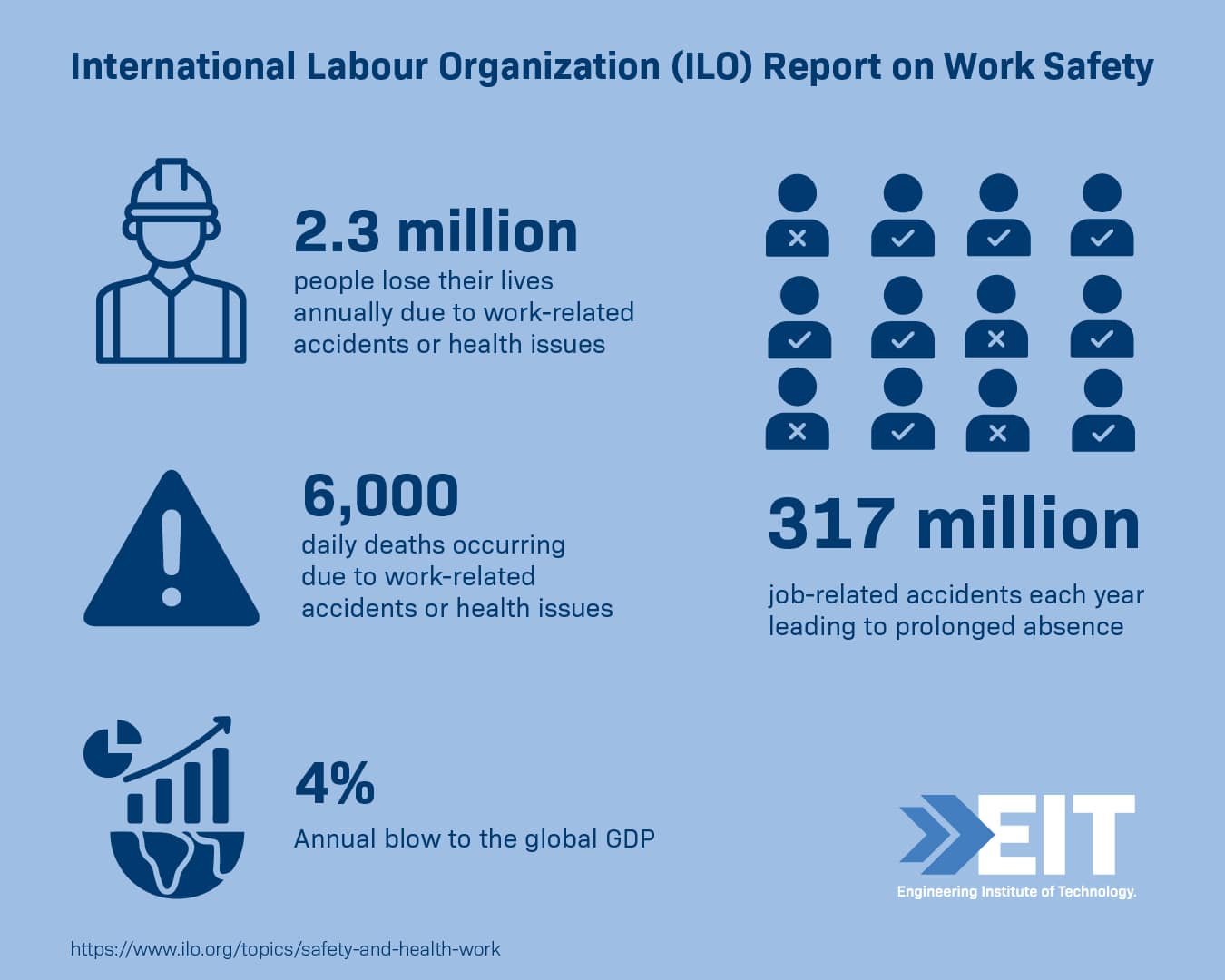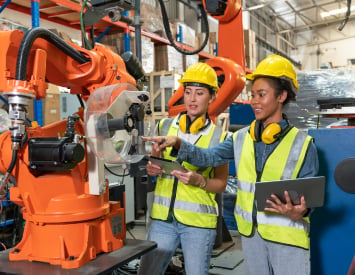Discover how artificial intelligence (AI) is revolutionizing workplace safety for engineers, creating smarter environments and reducing accidents. With cutting-edge technology, the future of safety is here, ensuring a more secure work experience for everyone.
In a time when workplace safety has never been more crucial, relying solely on traditional safety measures falls short of fully safeguarding workers.
The International Labour Organization (ILO) reports that around 2.3 million people lose their lives annually due to work-related accidents or health issues, equating to over 6,000 deaths each day. Additionally, there are about 317 million job-related accidents each year, leading to prolonged absences and considerable economic repercussions. This crisis costs roughly 4% of the global GDP every year.

In response to these alarming statistics, employers—especially in engineering—are increasingly committed to enhancing workplace safety by exploring the adoption of advanced technologies like AI.
Notable engineering firms, such as Siemens and Jacobs Engineering, are already investigating the integration of innovative technologies to boost worker safety. Siemens has implemented AI-driven predictive maintenance tools to identify equipment malfunctions before they pose a risk, while Jacobs Engineering uses AI analytics to optimize site safety protocols.
With its remarkable ability to analyze vast datasets and pinpoint potential hazards often overlooked by human observation, artificial intelligence is reshaping the landscape of workplace safety.
Through groundbreaking solutions like exoskeletons, AI-integrated personal protective equipment (PPE), robotics, and computer vision systems, AI is setting new standards for occupational health and safety.
The Role of AI in Reducing Workplace Injuries
Despite proactive measures such as training programs, safety initiatives, and PPE, human error remains a significant contributor to workplace accidents. AI’s data-driven approach presents an opportunity to bridge this gap by enabling employers to identify potential hazards before they lead to injuries.
Here are four interesting ways that AI is currently enhancing workplace safety:
AI-Driven Exoskeletons
AI-powered exoskeletons are advanced wearable devices designed to boost both productivity and safety for workers. By interpreting biometric data, these exoskeletons assist employees in physically demanding roles, minimizing strain and lowering injury risks. They effectively reduce stress on the spine, legs, and core muscles during tasks that involve heavy lifting or repetitive motions, alleviating fatigue significantly.
For instance, research conducted by companies like Toyota and Ford on exoskeletons demonstrated an 83% reduction in injuries among users. Additionally, these exoskeletons can provide an extra 30 kg of force, enabling workers to execute physically challenging tasks more safely and efficiently. In sectors such as manufacturing, construction, and logistics—where physical strain and injury risks are prevalent—AI-powered exoskeletons are proving to be transformative.
AI-Enabled Personal Protective Equipment
While PPE is critical for safeguarding workers, conventional gear lacks the capacity for real-time monitoring and alerts. AI-enabled PPE elevates safety measures by incorporating advanced technologies.
Wearable devices, such as smart helmets and boots, come equipped with sensors and AI algorithms that monitor health metrics and environmental conditions. These devices can identify unsafe situations—such as exposure to hazardous substances, extreme temperatures, or dangerous gases—and issue immediate alerts. For example, smart helmets can detect head impacts or proximity to hazards, empowering workers to respond quickly and avert injuries.
This innovative PPE is revolutionizing high-risk industries, including construction, oil and gas, and manufacturing, where hazardous conditions are commonplace.
Robots in High-Risk Environments
AI-driven robots are becoming essential in hazardous environments, particularly where human workers might encounter toxic materials, dangerous machinery, or risky heights.
These robots are capable of performing tasks like handling hazardous substances, welding in tight spaces, or managing heavy machinery, significantly reducing human exposure to dangerous conditions.
By assuming high-risk responsibilities, AI robots enhance productivity while simultaneously decreasing the likelihood of severe injuries or fatalities.
Industries such as mining, chemical manufacturing, and construction are increasingly relying on these robots for safer operations.

Computer Vision for Real-Time Hazard Detection
One of the most impactful applications of AI in workplace safety is computer vision. This technology employs cameras, sensors, and machine learning algorithms to oversee employee activities, identify hazards, and issue real-time warnings. Computer vision systems can recognize potential threats, such as elevated body temperatures (to prevent heat stress), trip hazards, and unsecured equipment that could lead to accidents.
For example, a network of cameras using computer vision can analyze live video feeds to monitor worker movements, ensuring compliance with safety protocols and alerting them if they enter a hazardous area. This continuous surveillance minimizes accident risks and helps maintain high safety standards in the workplace.
The Future of AI in Workplace Safety
As we look ahead, the future of workplace safety in engineering is poised for a remarkable transformation, driven by the continuous evolution of AI technologies. With the complexities of maintaining safety, it is clear that AI stands to redefine how we approach these challenges, turning them into exciting opportunities for advancement and innovation.
The integration of AI into workplace safety protocols represents not just a trend, but a critical shift towards more secure and efficient working environments. In the future, we can expect AI systems to become even more sophisticated, enabling real-time monitoring and predictive analytics that will allow organizations to foresee and mitigate risks before they escalate.
By harnessing the power of AI, companies can move beyond traditional safety measures, embracing a proactive stance that minimizes workplace accidents and ultimately protects lives. This forward-thinking approach promises to create not only safer workplaces but also fosters a culture of continuous improvement and resilience in the face of emerging challenges.
References
A Look at the Future of Employee Protection


